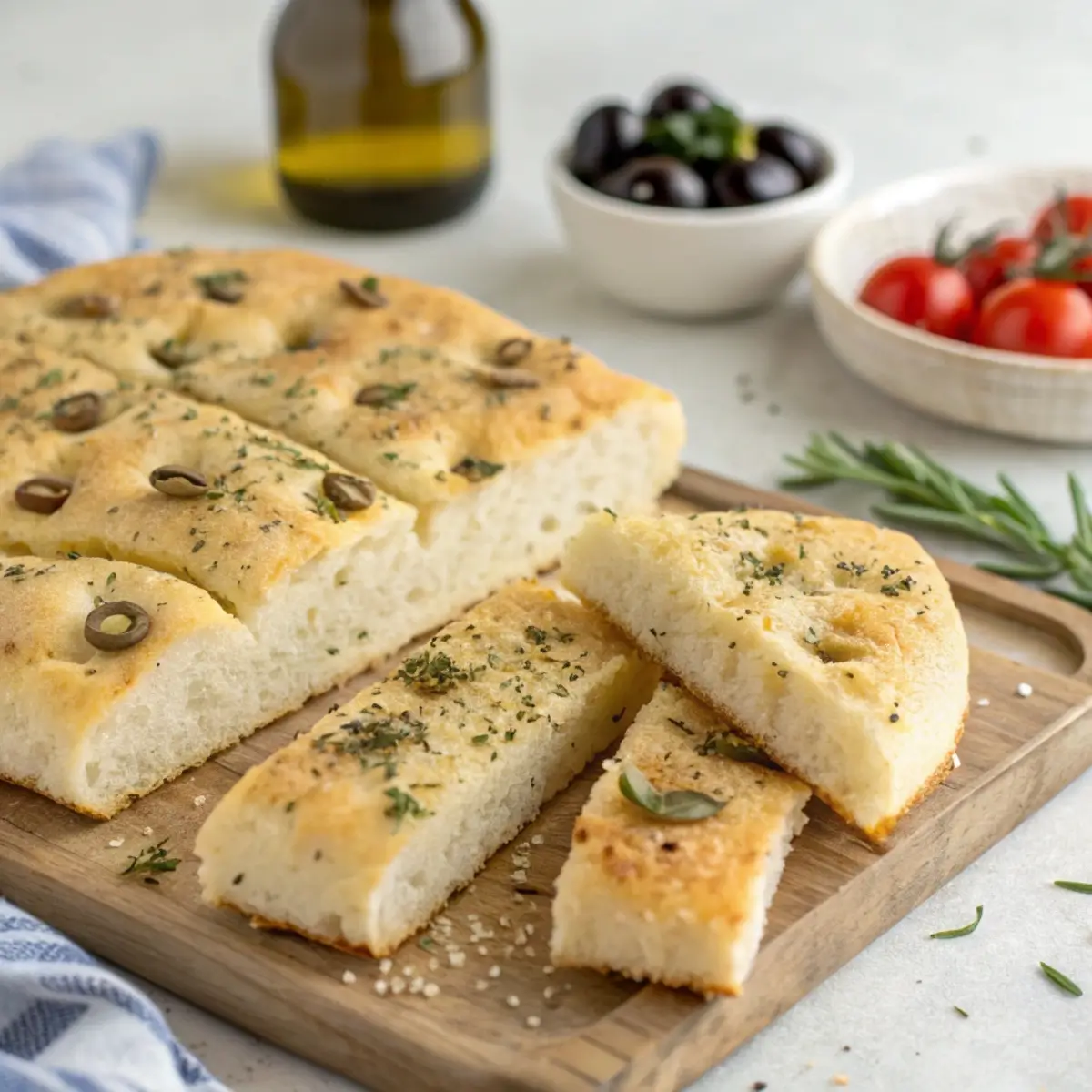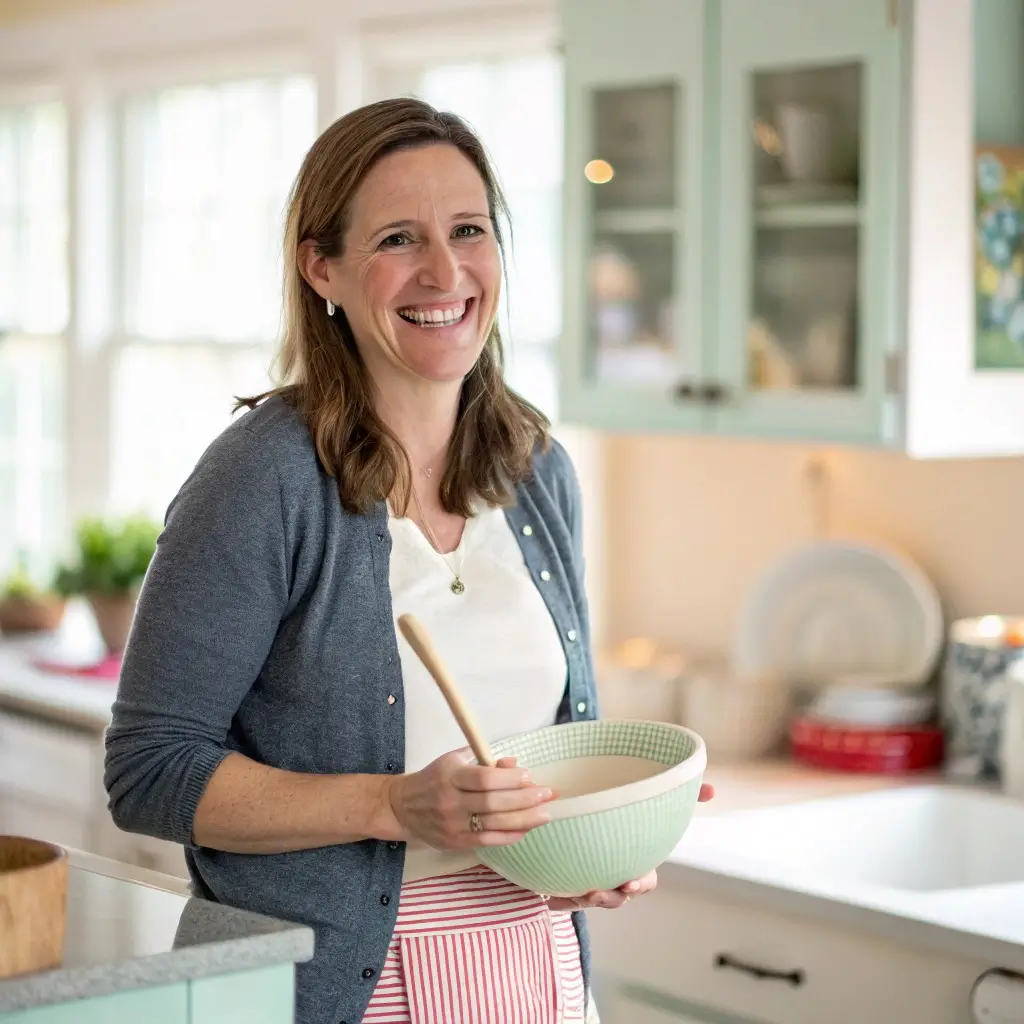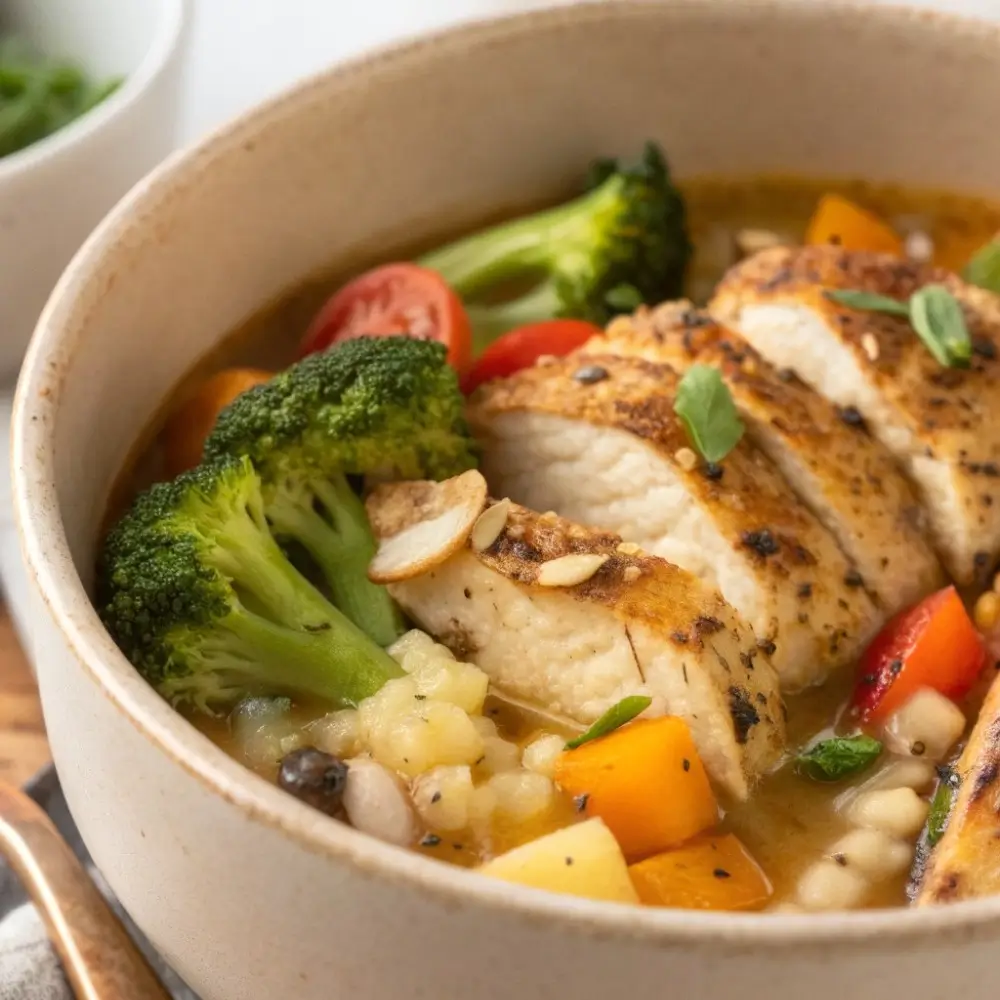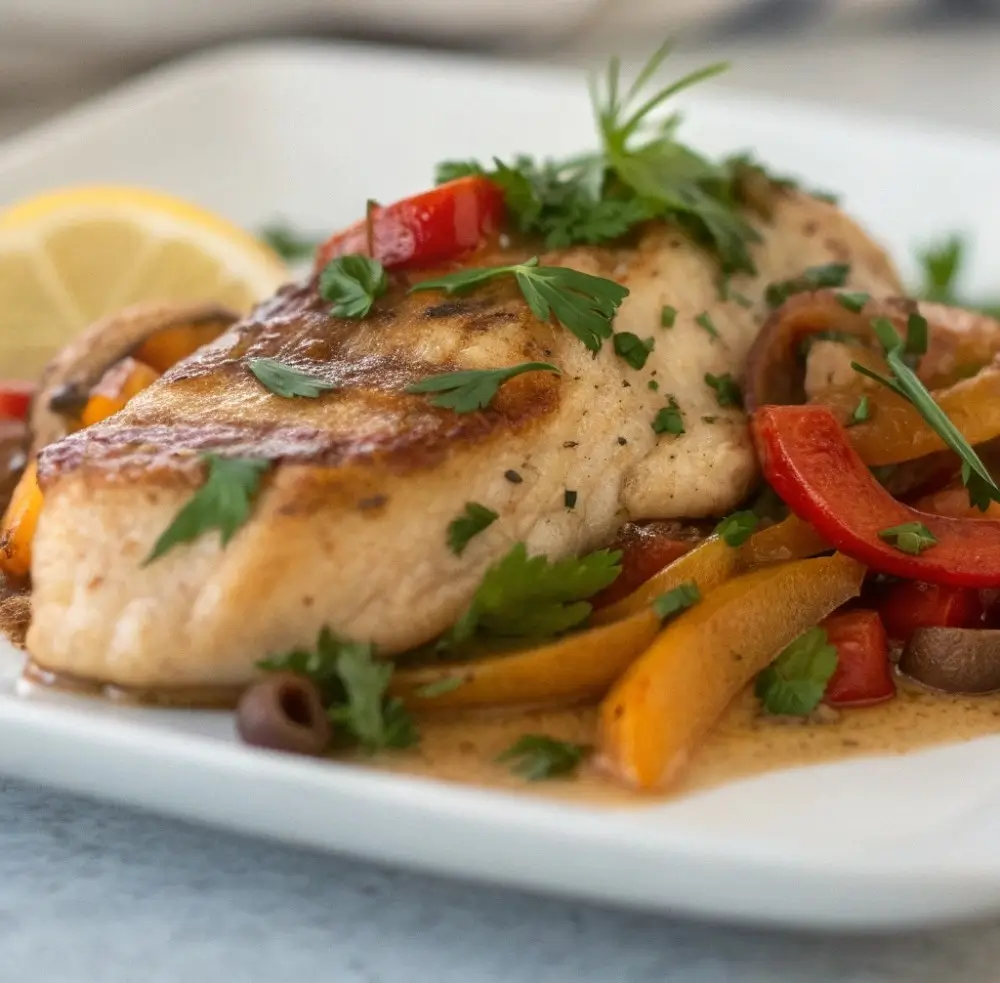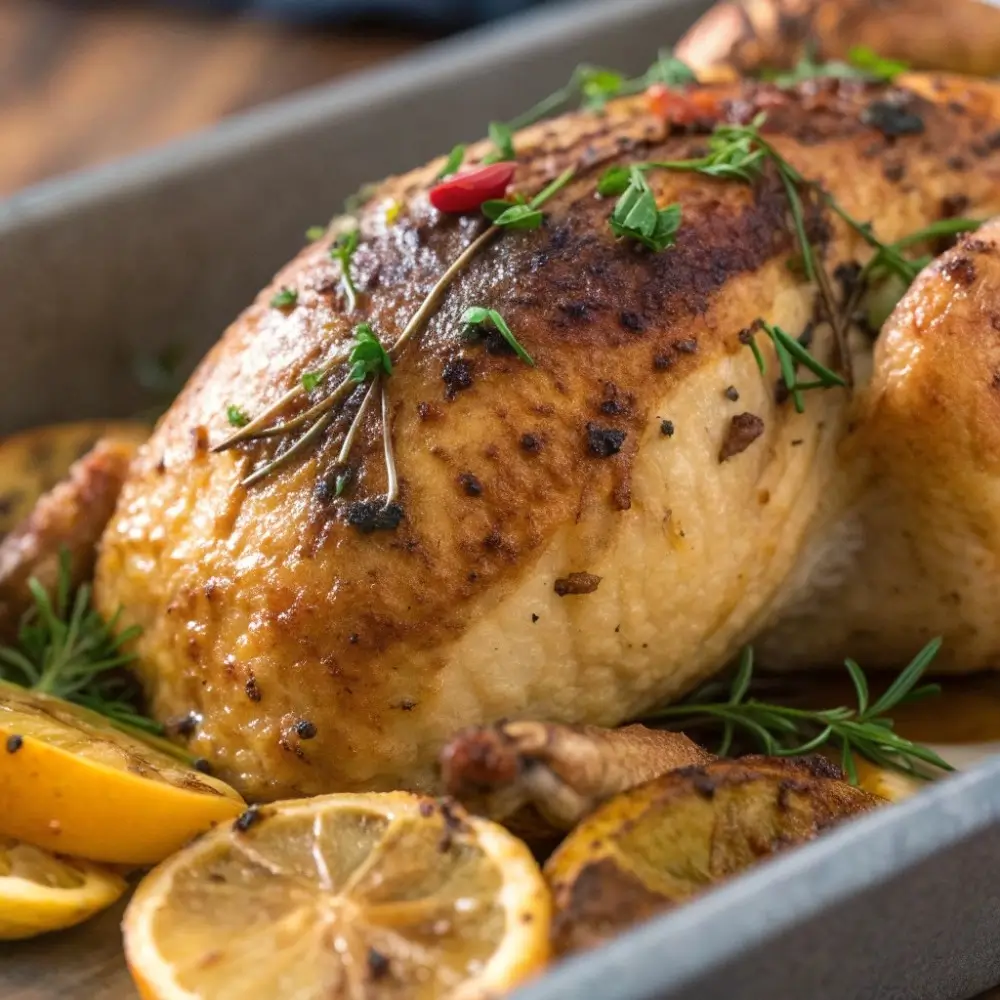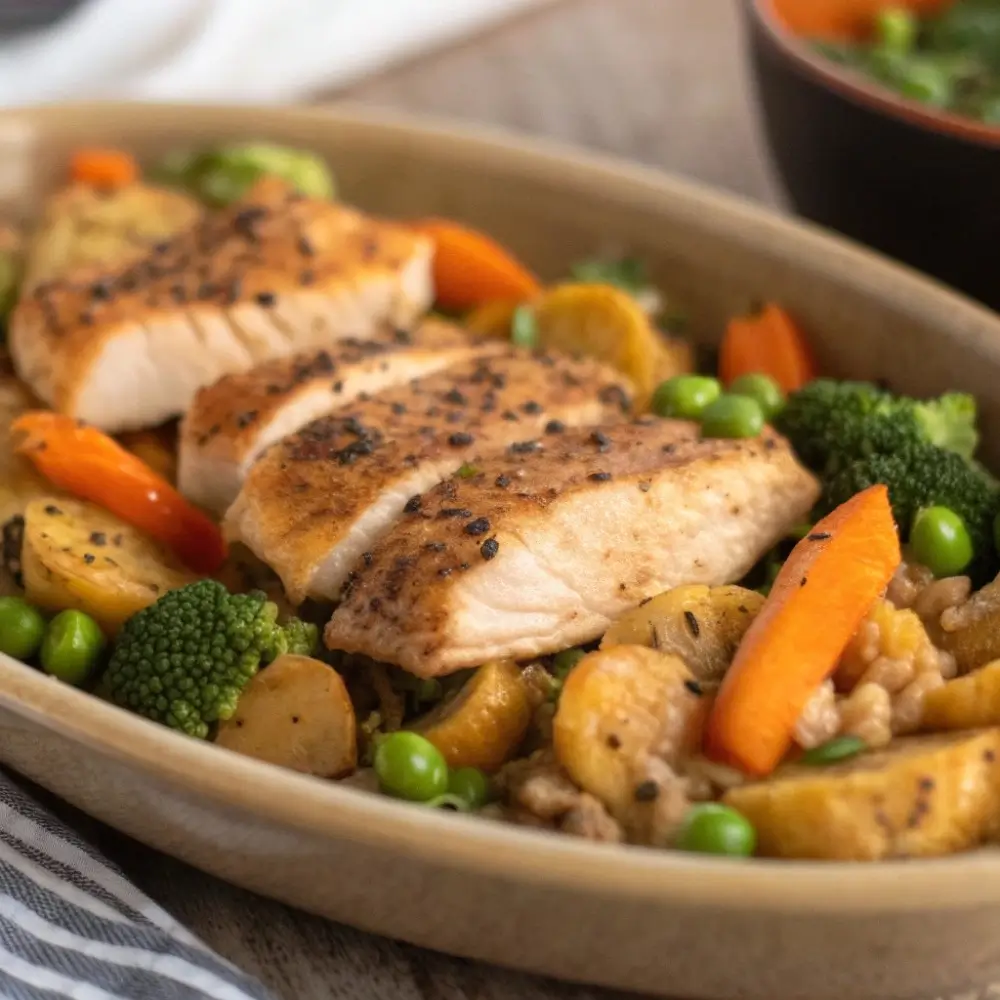Table of Contents
- 1 Why Add Protein to Focaccia?
- 2 Ingredients for High-Protein Sourdough Focaccia
- 3 The Protein-Boosting Strategy
- 4 Step-by-Step Method
- 5 Texture and Taste
- 6 Tips for the Perfect High-Protein Focaccia
- 7 Flavor Additions
- 8 How to Serve
- 9 Storing and Reheating
- 10 Nutritional Highlights
- 11 Troubleshooting
- 12 Frequently Asked Questions
- 13 Texture Guide
- 14 Why This Recipe Works
- 15 Final Thoughts
Sourdough focaccia is loved for its signature combination of a crisp, golden crust and a soft, pillowy interior. But what if you could enjoy that same flavor and texture — with an added nutritional boost?
Welcome to the High-Protein Sourdough Focaccia Version — a wholesome twist on the Italian classic designed for anyone who wants to elevate their baking with better balance and nourishment.
This recipe keeps all the comforting qualities of traditional focaccia — the olive oil aroma, the chewy crumb, the tang of sourdough — but adds extra protein using clever flour combinations and nutrient-rich mix-ins. The result? A focaccia that’s as satisfying as it is delicious, perfect for meal prep, post-workout snacks, or as a healthy side for family dinners.
Whether you’re a fitness enthusiast, a health-conscious home baker, or simply looking to make your bread a bit more filling, this high-protein focaccia will become a new favorite in your kitchen.
Why Add Protein to Focaccia?
Adding protein to bread isn’t just a health trend — it’s a smart way to create more balanced meals.
Here’s what extra protein does for your focaccia:
-
Improves satiety: You’ll feel full longer and avoid mid-afternoon hunger spikes.
-
Supports muscle repair: Ideal for active lifestyles or post-workout recovery.
-
Enhances texture: Protein-rich ingredients strengthen the gluten network, giving a slightly chewier, more satisfying crumb.
-
Balances nutrition: Turns focaccia into a wholesome choice for lunches and snacks.
The best part? This recipe does it all naturally — no artificial protein powders or additives, just thoughtful ingredient swaps.
Ingredients for High-Protein Sourdough Focaccia
For the Dough
-
350 g bread flour (high-protein, about 12–13%)
-
100 g whole wheat flour (adds fiber and natural protein)
-
50 g chickpea flour (boosts plant-based protein)
-
425 g water (80–85% hydration, adjust as needed)
-
100 g active sourdough starter (100% hydration)
-
12 g fine sea salt
-
25 g extra virgin olive oil
Optional Protein Add-Ins (choose 1–2 for extra boost)
-
40 g hemp seeds
-
40 g pumpkin seeds
-
40 g sunflower seeds
-
2 tablespoons sesame seeds
-
2 tablespoons ground flaxseed
For Topping
-
2–3 tablespoons olive oil
-
Flaky sea salt
-
Fresh rosemary or thyme (optional)
-
Cherry tomatoes, olives, or roasted garlic for garnish
The Protein-Boosting Strategy
This recipe combines several natural sources of protein to create a bread that’s both nutritious and delicious.
1. Bread Flour: Naturally high in gluten protein for elasticity and chew.
2. Whole Wheat Flour: Adds plant-based protein and fiber.
3. Chickpea Flour: Rich in protein and minerals, it adds a subtle nutty flavor.
4. Seeds: Hemp, pumpkin, and sunflower seeds not only increase protein but add texture and healthy fats.
This smart layering of protein sources ensures the bread stays soft and flavorful without becoming dense or dry.
Step-by-Step Method
Mixing the Dough
In a large mixing bowl, whisk together your active sourdough starter and water until dissolved. Add all the flours and mix with your hands or a dough whisk until no dry patches remain.
The dough will look shaggy and sticky — that’s normal. Cover and let it rest for 45 minutes (autolyse). This step allows gluten to begin developing naturally.
Adding Salt and Olive Oil
After autolyse, add the salt and olive oil. Using your hands, pinch and fold the dough to incorporate. It might feel slippery at first, but keep folding — it will soon tighten and smooth out.
Bulk Fermentation
Cover the bowl and let the dough rise at room temperature (around 75°F / 24°C) for 4–6 hours, or until doubled in size and bubbly.
During the first two hours, perform 3–4 sets of stretch and folds every 30 minutes to strengthen the gluten and evenly distribute the protein-rich flours.
To stretch and fold:
-
Wet your hands to prevent sticking.
-
Lift one side of the dough and fold it over the center.
-
Rotate the bowl and repeat on all four sides.
After the last fold, let the dough rest undisturbed until airy and soft.
Cold Fermentation (Optional but Recommended)
For deeper flavor and easier handling, refrigerate the dough overnight (12–18 hours). The cold ferment also improves the gluten structure, which helps when working with protein-rich flours.
Shaping the Focaccia
Generously oil your baking pan (9×13-inch metal pan or cast iron skillet). Drizzle 2–3 tablespoons of olive oil into the base and brush along the sides.
Gently transfer the chilled dough into the pan. With oiled hands, stretch it toward the corners without popping the bubbles. If the dough resists, rest for 10 minutes, then stretch again.
Final Proof
Cover and let the dough rest at room temperature for 2–4 hours, or until it looks puffy and jiggly.
Dimpling and Topping
Preheat your oven to 450°F (230°C).
Drizzle olive oil generously over the dough. With oiled fingertips, press into the dough to create deep dimples all over. Sprinkle flaky salt and your favorite toppings — rosemary, tomatoes, or a handful of seeds for crunch and extra protein.
Baking
Bake for 25–30 minutes, or until the focaccia is deep golden brown with crisp edges.
If your oven has convection, switch it on for the final 5 minutes to enhance browning.
Cooling and Serving
Let the focaccia rest in the pan for 5 minutes, then transfer it to a cooling rack.
Allow it to cool for at least 15–20 minutes before slicing. The crumb will set and maintain its softness.
Enjoy warm or at room temperature. The flavor develops beautifully as it cools.
Texture and Taste
This high-protein focaccia is a beautiful balance of soft and hearty. The crumb stays open and tender thanks to hydration and gluten development, while the chickpea flour and seeds add a subtle nuttiness.
The crust crisps perfectly in olive oil, offering that irresistible golden bite that contrasts the pillowy interior.
Tips for the Perfect High-Protein Focaccia
Measure Precisely
Protein-rich flours absorb more water than white flour. Adjust hydration as needed to keep the dough soft but not soupy.
Use Active Starter
Your sourdough starter should be bubbly and recently fed to ensure proper rise and fermentation.
Don’t Overwork
Too much kneading can make the dough tough. Stretch and folds are gentle and effective.
Bake Hot
High-protein dough browns beautifully under high heat — 450°F ensures a crisp crust without drying the inside.
Oil Generously
Olive oil not only enhances flavor but helps create the golden crust and prevents sticking.
Flavor Additions
Want to make it even more exciting? Try these nutrient-rich variations:
-
Garlic and Herb Protein Focaccia: Add minced garlic and dried herbs to the dough.
-
Seeded Protein Focaccia: Top with hemp, sesame, and pumpkin seeds before baking.
-
Spinach Protein Focaccia: Mix ¼ cup finely chopped spinach into the dough for added nutrients.
-
Chickpea and Tomato Focaccia: Press cherry tomato halves and chickpeas into the surface before baking.
How to Serve
This versatile focaccia fits beautifully into any meal:
-
Meal prep base: Slice and freeze for quick sandwich bread.
-
Breakfast: Toast and top with avocado, hummus, or eggs.
-
Lunch: Pair with soups, salads, or wraps.
-
Dinner: Serve alongside roasted vegetables or grilled chicken.
-
Snack: Tear and dip into extra-virgin olive oil with a sprinkle of salt.
Storing and Reheating
Let focaccia cool completely before storing.
-
Room temperature: Up to 2 days in an airtight container.
-
Refrigerator: Up to 5 days.
-
Freezer: Up to 1 month — slice before freezing for easy reheating.
To reheat, place in a 350°F (175°C) oven for 5–8 minutes to restore crispness. Avoid microwaving — it softens the crust.
Nutritional Highlights
This high-protein version of sourdough focaccia offers:
-
More plant-based protein (from flour and seeds)
-
Healthy fats from olive oil and seeds
-
Dietary fiber for better digestion
-
Complex carbohydrates for lasting energy
It’s a great option for those aiming to balance indulgence with nutrition — you get a satisfying bread without sacrificing wellness goals.
Troubleshooting
Why is my dough dense?
High-protein flours absorb water differently. Increase hydration slightly and ensure your starter is active.
Why is the crumb tight?
The dough may have been under-proofed. Allow more time during bulk fermentation until it doubles in size.
Why didn’t my dough rise much?
Cold environments slow fermentation. Extend resting time or place in a slightly warmer spot.
Why is my focaccia dry?
It may have baked too long or with too little oil. Reduce bake time slightly next round.
Frequently Asked Questions
Can I use protein powder instead of chickpea flour?
You can add 1–2 tablespoons of unflavored protein powder, but chickpea flour offers a more natural flavor and texture.
Can I make this gluten-free?
This version isn’t gluten-free, but you can experiment with a 1:1 gluten-free flour mix and xanthan gum.
Does the chickpea flour taste strong?
No — in small amounts, it adds a mild, nutty flavor that complements sourdough perfectly.
Can I skip the seeds?
Yes, but they add extra protein and texture. Choose your favorites or leave them out for a smoother crumb.
Is it still soft like regular focaccia?
Absolutely! With proper hydration and fermentation, it’s just as airy and tender as the classic version.
Texture Guide
-
After mixing: Sticky and slightly elastic.
-
After bulk fermentation: Smooth and airy.
-
After cold ferment: Puffy and strong.
-
Before baking: Jiggly and full of bubbles.
-
After baking: Crisp golden crust with a soft, high-protein interior.
Why This Recipe Works
By blending traditional bread flour with whole wheat and chickpea flour, you boost the protein content naturally while maintaining structure.
The sourdough fermentation lightens the crumb, balances flavor, and enhances nutrition through natural fermentation.
Combined with olive oil and smart hydration, the result is a nutrient-dense bread that tastes indulgent yet wholesome.
Final Thoughts
This High-Protein Sourdough Focaccia proves that healthy baking doesn’t have to compromise on flavor or texture. Every bite delivers that classic focaccia experience — crisp edges, airy crumb, and rich olive oil aroma — but with a meaningful nutritional upgrade.
It’s the perfect way to enjoy bread while staying aligned with your health goals. Whether you’re baking for family, prepping for the week, or just want something hearty and delicious, this recipe delivers every time.
Simple ingredients, mindful tweaks, and the magic of sourdough come together to make a loaf that’s nourishing, satisfying, and absolutely irresistible.
So, roll up your sleeves, get your starter ready, and bake a focaccia that truly fuels you — body and soul.
